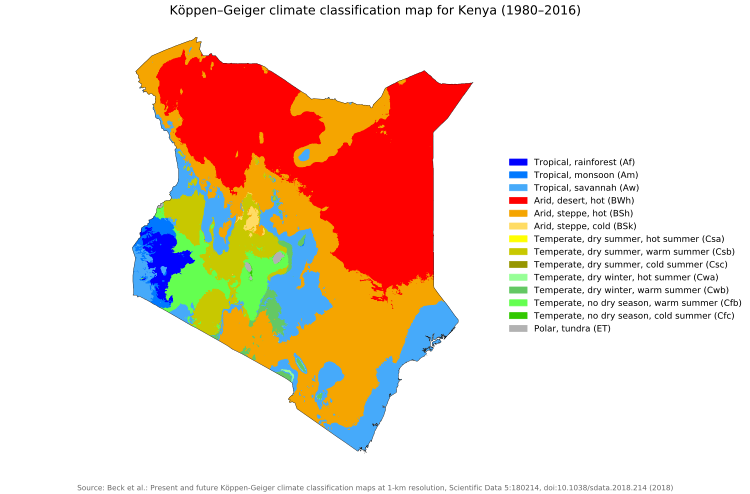The semiarid and arid regionsof northern, northeastern, and southern Kenya have high temperatures but very erratic precipitation. Most places experience average temperatures of 85 °F (29 °C) or more, while annual precipitation is only about 10 inches (250 mm) in the north and less than 20 inches (500 mm) in the south.
Kenya's weather has a significant impact on tourism.
The country's two rainy seasons, which run from March to May and from October to December, can make some parts of Kenya inaccessible or less appealing to tourists. For example, the Masai Mara National Reserve, a popular tourist destination, is often muddy and flooded during the rainy season.
However, the weather can also be a draw for tourists. The dry season, which runs from June to October, is when many animals are most active and easier to see. This is also when the temperatures are cooler, making it more comfortable for tourists to be outdoors.
Here are some of the ways that Kenyan weather affects tourism:
- Rainy season: The rainy season can make some parts of Kenya inaccessible or less appealing to tourists. This is because the roads can become muddy and impassable, and some tourist attractions may be closed due to flooding.
- Dry season: The dry season can be hot and dusty, which can make it uncomfortable for tourists to be outdoors. However, the dry season is also when many animals are most active and easier to see.

- Extreme weather events: Kenya is prone to extreme weather events such as droughts, floods, and heat waves. These events can have a significant impact on tourism, as they can damage tourist infrastructure and make it dangerous for tourists to travel.
Despite the challenges posed by Kenya's weather, the country remains a popular tourist destination. The country's diverse climate and stunning scenery attract visitors from all over the world. Tourism is a major source of income for Kenya, and the government is working to mitigate the impact of weather on tourism.
What is the weather usually like in Kenya?
It's generally sunny, dry and temperate most of the year in Kenya despite being situated directly on the equator. Central Kenya's Laikipia Plateau is situated at an altitude that keeps temperatures comfortable.
Here is a clear graph of the weather in Kenya:

The graph shows that Kenya has a tropical climate with warm temperatures year-round. The average temperature in Nairobi, the capital city, is 24°C (75°F).
The hottest months are January and February, when the average temperature can reach 26°C (79°F). The coolest months are June, July, and August, when the average temperature can drop to 18°C (64°F).
The rainy season in Kenya is from March to May and from November to December. The wettest month is April, when the average rainfall is 150mm (6 inches). The driest month is June, when the average rainfall is 50mm (2 inches).
The weather in Kenya can vary depending on the region. The coastal region is generally warmer and more humid than the interior. The highlands are cooler and have a more temperate climate.
Here are some of the best places to visit in Kenya, based on the weather:
-
Masai Mara National Reserve:
This is one of the most popular tourist destinations in Kenya, and it is known for its large populations of lions, elephants, and zebras. The best time to visit the Masai Mara is during the dry season (June to October), when the animals are more visible.
-
Lake Nakuru National Park:
This park is known for its large flocks of pink flamingos, which gather in the lake during the dry season. The park is also home to a variety of other animals, including lions, rhinos, and leopards. The best time to visit Lake Nakuru is during the dry season (June to October).
-
Mount Kenya National Park:
This park is home to Mount Kenya, the second-highest mountain in Africa. The park is also home to a variety of other wildlife, including elephants, lions, and leopards. The best time to visit Mount Kenya National Park is during the dry season (June to October), when the weather is cooler and the roads are more accessible.
This coastal city is known for its beaches, its vibrant culture, and its delicious seafood. The best time to visit Mombasa is during the dry season (December to February).
The capital city of Kenya, Nairobi is a bustling metropolis with a variety of attractions, including the Nairobi National Museum, the Giraffe Centre, and the Karen Blixen Museum. The best time to visit Nairobi is during the dry season (June to October), when the weather is cooler and the skies are clearer.
These are just a few of the many great places to visit in Kenya. No matter what time of year you visit, you are sure to find something to enjoy.